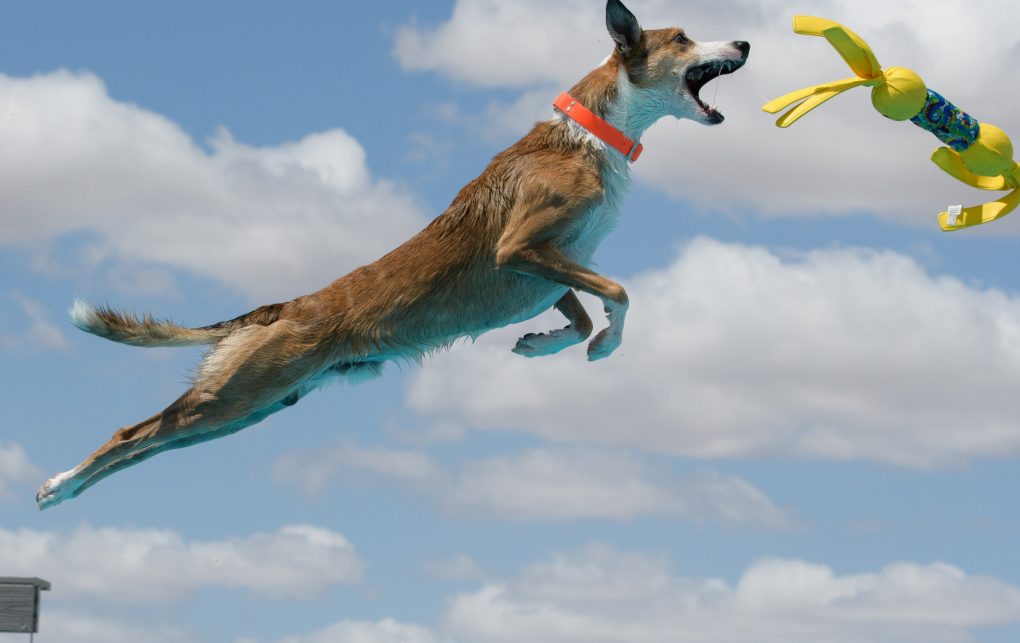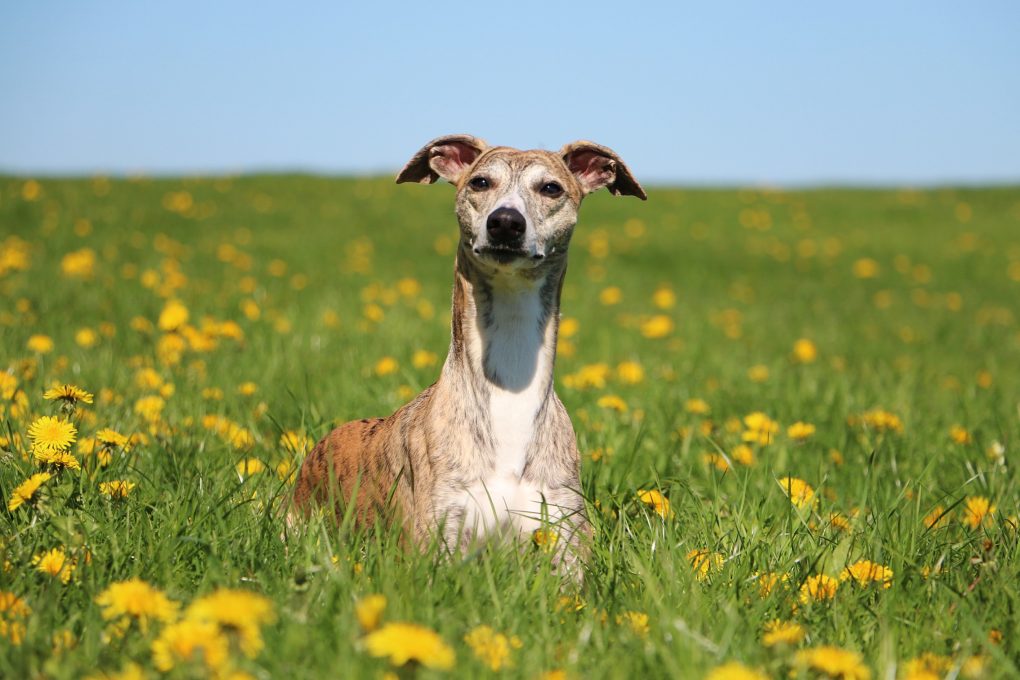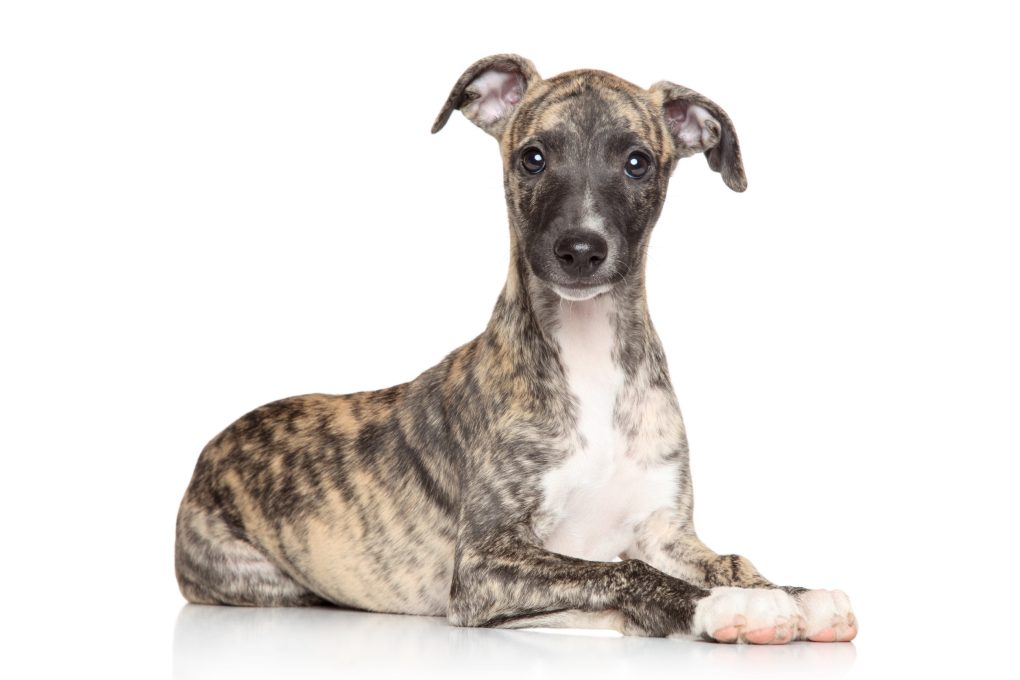Whippet vs. Greyhound: Which Pet Suits You
Greyhounds typically weigh between 60-70 pounds and stand around 27-30 inches tall at the shoulder, while Whippets usually weigh around 25-45 pounds and stand between 18-22 inches tall at the shoulder. Greyhounds and Whippets have a gentle and affectionate nature, but Greyhounds are generally more laid back and calm than Whippets, who can be more energetic and playful.
Table of Contents
Comparing Greyhound vs. Whippet


History
Greyhounds are one of the oldest known breeds, dating back over 4,000 years to ancient Egypt. They were originally bred as hunting dogs for their speed and agility and were used for hunting games such as deer, wolves, and hares, and Greyhounds were also used for coursing, which involved chasing and catching small game animals such as rabbits, hares, and foxes.
On the other hand, Whippets are a more recent breed, with their origins dating back to 1800s England, according to WebMD. They were initially bred by working-class coal miners and weavers who wanted a smaller, more affordable version of the Greyhound. Whippets were primarily used for hunting small game, such as rabbits, dog racing, and other sports.
Speed
Greyhounds are the fastest dog breed and can run up to 45 miles per hour, making them one of the fastest land animals in the world. Whippets are also very fast, with a top speed of around 35 miles per hour. This still makes them one of the fastest dog breeds, but they can’t match the sheer speed of a Greyhound. Both breeds are built for speed, with long, muscular legs and streamlined body that helps them to move quickly and efficiently.
While Greyhounds are faster than Whippets, Whippets are more agile and better suited to quick bursts of speed and changes in direction. This makes them better at sports such as lure coursing and agility.
Temperament
Greyhounds and Whippets are both sighthounds with similar temperaments, but their personalities differ. Here are some critical differences between Greyhound and Whippet temperaments:
- Energy level: Whippets tend to be more energetic and playful than Greyhounds. They have bursts of energy and enjoy running and playing, whereas Greyhounds are typically more laid back and calm.
- Independence: Greyhounds are known for being independent and sometimes aloof, while Whippets are typically more affectionate and attached to their owners.
- Sensitivity: Whippets are generally more sensitive than Greyhounds, both physically and emotionally. They can be more prone to anxiety and stress and may require more gentle handling.
- Socialization: Greyhounds are typically more social and outgoing than Whippets, who can be more reserved and shy. Socializing both breeds from a young age is essential to ensure they are comfortable around other people and animals.
Coats and Grooming
Greyhounds and Whippets have similar coats that are easy to maintain, but there are some differences in their grooming needs. Here are some critical differences between Greyhound and Whippet coats and grooming:
- Coat type: Both breeds have short, smooth coats that do not require a lot of grooming. However, Greyhounds tend to have a thicker coat with a denser undercoat, while Whippets have a finer, thinner coat.
- Shedding: Greyhounds shed more than Whippets due to their thicker coats. They shed moderately year-round and heavily during shedding season. Whippets shed less and have a more consistent shedding pattern throughout the year.


- Grooming: Both breeds require regular brushing to keep their coats shiny and healthy. A soft bristle brush or a rubber grooming mitt can remove loose hair and distribute natural oils. Greyhounds may require a more thorough grooming routine, including occasional bathing and trimming of their nails and paw pads.
- Sun protection: Greyhounds are more sensitive to the sun than Whippets due to their lighter skin and thinner coat. It’s essential to protect them from the sun by using a dog-safe sunscreen or providing shade when they are outside.
- Clothing: Because Greyhounds have a thinner coats and less body fat than Whippets, they are more sensitive to cold temperatures and may benefit from wearing a coat or sweater in chilly weather. Whippets, on the other hand, have a more moderate tolerance to cold and may not need as much protection.
Trainability
Whippets tend to be highly trainable and eager to please, making them a good choice for first-time dog owners. They respond well to positive reinforcement training methods and can learn a wide range of commands and tricks with consistent training. They also have a strong prey drive and love to chase, making it more challenging to train in certain situations.
Greyhounds, on the other hand, can be more independent and stubborn in their learning style. They are knowledgeable and sensitive but may not be as eager to please as Whippets. They require a firm and consistent training approach that uses positive reinforcement methods but can be more challenging to train in some aspects. Like Whippets, they also have a strong prey drive and can be challenging to train off-leash.
Health
Greyhounds and Whippets are generally healthy breeds, but like all dogs, they are prone to specific health issues. Here are some critical differences between Greyhound and Whippet health:
- Bone and joint issues: Greyhounds are more prone to bone and joint issues such as arthritis, hip dysplasia, and osteosarcoma (bone cancer) due to their larger size and weight. Whippets are generally healthier in this regard, but they can still be prone to the luxating patella (a knee cap that moves out of place).
- Eye problems: Greyhounds and Whippets are susceptible to certain eye conditions such as progressive retinal atrophy (PRA), cataracts, and corneal ulcers. However, Greyhounds are more prone to developing PRA, while Whippets are more prone to corneal ulcers.
- Heart issues: Greyhounds and Whippets are prone to heart issues such as dilated cardiomyopathy (DCM), in which the heart is enlarged and weakened. However, Greyhounds are more prone to this condition than Whippets.
- Sensitivity to anesthesia: Greyhounds and Whippets are sensitive to certain types of anesthesia and require special care when undergoing surgery or dental procedures.


- Dental issues: Greyhounds are prone to dental issues such as periodontal disease, which narrow muzzles and crowded teeth can exacerbate. Whippets are less prone to dental issues but still require regular dental care.
Life Expectancy
Whippets have a slightly longer lifespan than Greyhounds. A typical Whippet can live up to 12-15 years, while a Greyhound may live up to 10-14 years. This may be partly because Greyhounds are larger and heavier than Whippets and may be more prone to specific health issues such as bone and joint problems and heart disease.
